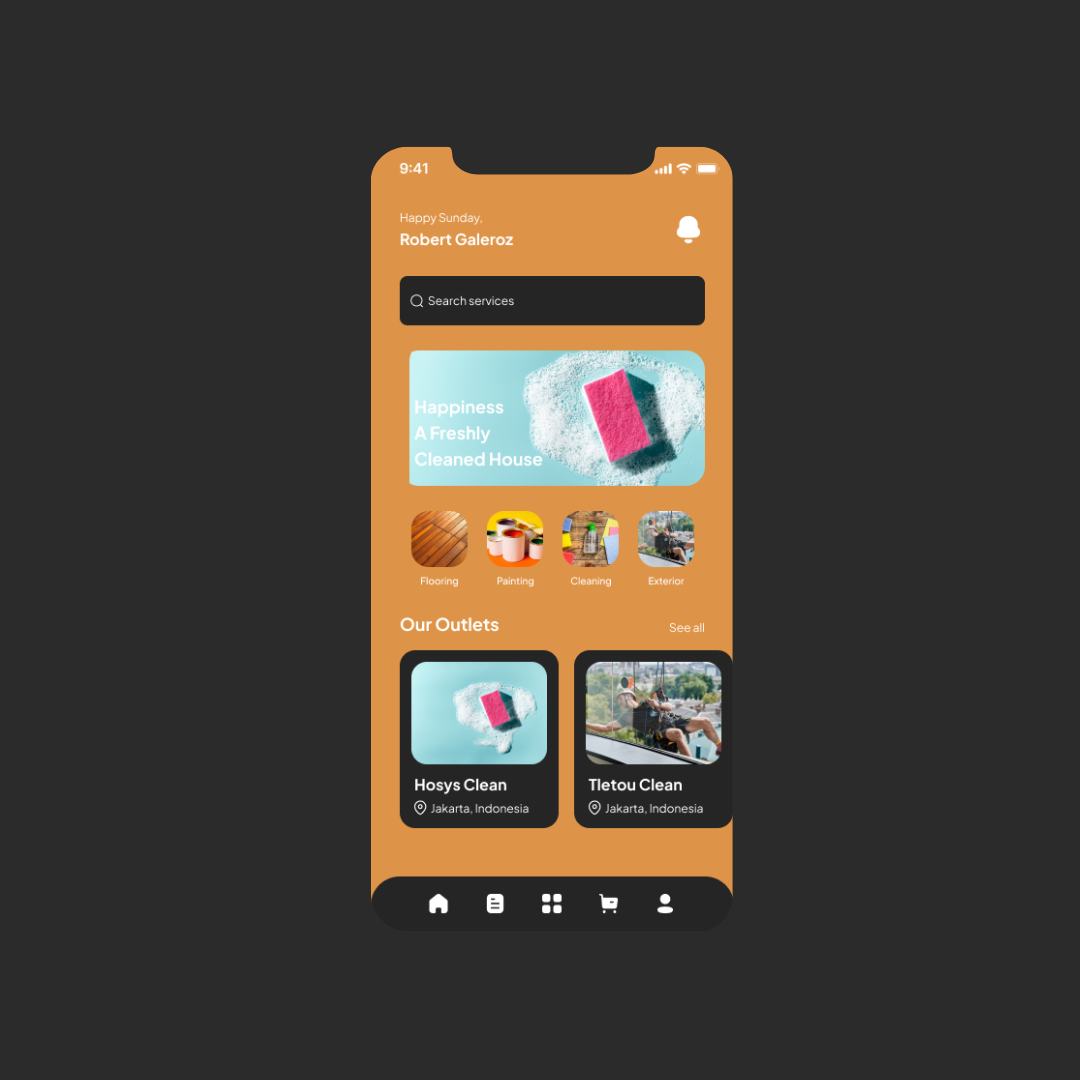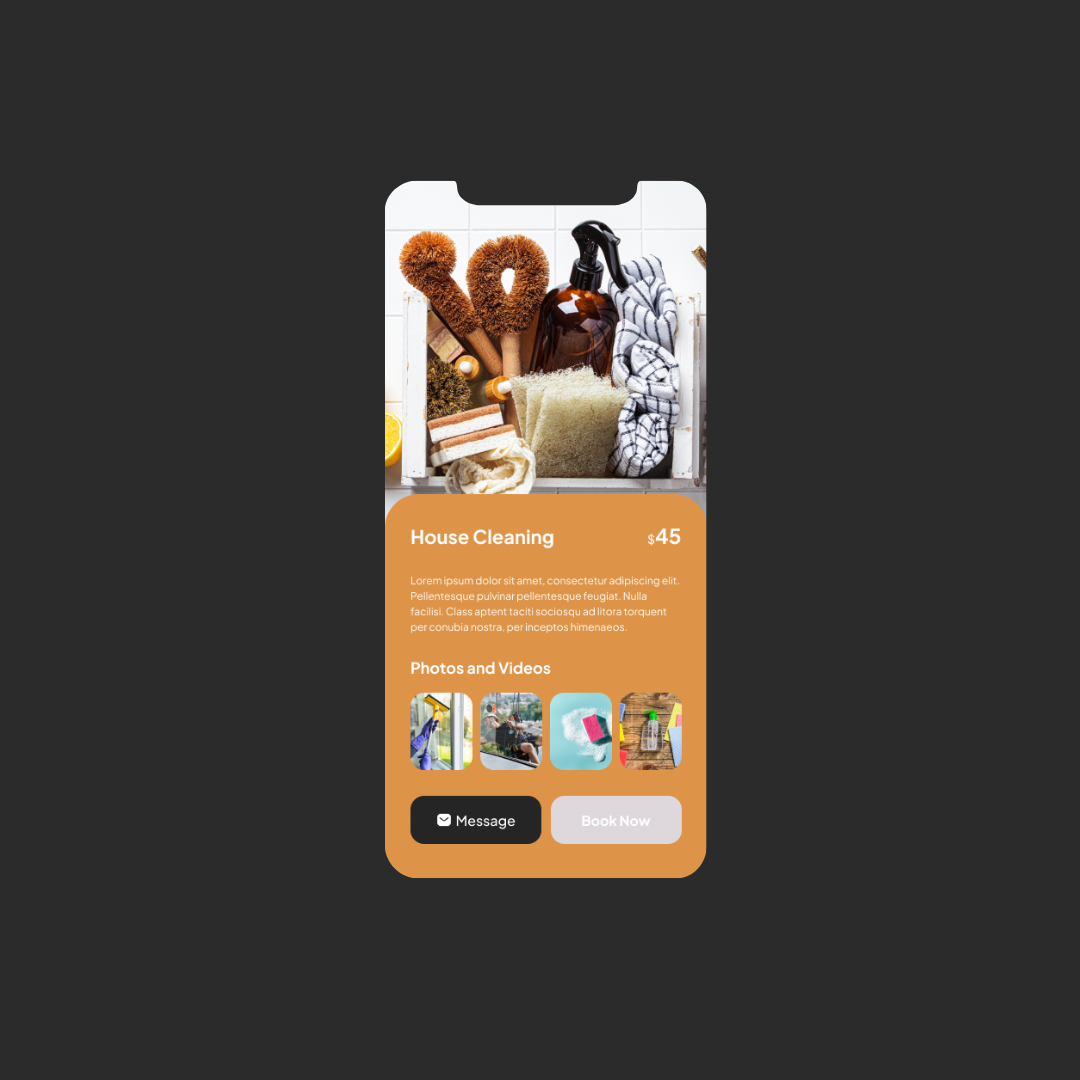On-Demand Home Cleaning Service Mobile Application




The On-Demand Home Cleaning Service Mobile App project developed a user-centric platform that provides convenient and reliable home cleaning services to customers. The project involved understanding the needs and goals of users, researching and analyzing user behavior and feedback, and creating design development solutions that are intuitive, efficient, and enjoyable to use. By leveraging technology and user-centric design principles, the project has revolutionized the home cleaning service industry and delivered a seamless user experience.
The On-Demand Home Cleaning Service Mobile App is a digital platform that connects customers with professional cleaners who offer a range of cleaning services for residential properties. The app allows users to easily book cleaning services, manage appointments, make secure payments, and provide feedback. The product emphasizes simplicity, reliability, and transparency to ensure a hassle-free experience for both customers and service providers.
The core problem that users encountered in the home cleaning service industry was the lack of a convenient and efficient platform for booking cleaning services. Traditional methods of finding and hiring cleaners often involved time-consuming phone calls, unreliable services, and limited transparency. Users faced difficulties in finding trusted and qualified cleaners who could accommodate their specific cleaning needs and preferences. The process lacked transparency and convenience, leading to frustration and dissatisfaction among users.
The goal of this case study was to create an On-Demand Home Cleaning Service Mobile App that addressed the pain points of users and provided a seamless, reliable, and enjoyable experience for booking cleaning services. By conducting user research, analyzing user behavior, and implementing design and development solutions, the project aimed to transform the home cleaning service industry. The ultimate objective was to enhance user satisfaction, increase trust in the platform, and establish the app as a leading provider of on-demand home cleaning services.
The On-Demand Home Cleaning Service Mobile App project developed a user-centric platform that provides convenient and reliable home cleaning services to customers.



Based on user research, it was found that users faced several pain points when it came to booking home cleaning services. These included difficulties in finding trusted and qualified cleaners, limited transparency in pricing and service quality, and a lack of convenience in the booking process. Users were seeking a solution that offers a seamless and reliable experience, providing them with access to professional cleaners and transparent pricing information.
The primary pain point that users faced was the lack of a convenient and reliable platform for booking home cleaning services. Users struggled to find trusted and qualified cleaners who could accommodate their specific needs. The absence of transparency in pricing and service quality further compounded the problem, leading to a lack of trust and satisfaction.
User Persona: Emily - The Busy Professional
Age: 32
Occupation: Marketing Manager
Goals: Finding a reliable and trustworthy home cleaning service that can efficiently clean her apartment during her hectic work schedule.
Pain Points: Difficulty in finding reliable cleaners, lack of transparency in pricing and service quality, inconvenience in the booking process due to limited time.
The project followed a structured approach with the following key sections:
By completing this project, the following impact was achieved:
Throughout the project, valuable insights were gained regarding user preferences, pain points, and behavior. Lessons learned included the importance of user-centric design, the significance of transparency and reliability in service-based platforms, and the iterative nature of product development.